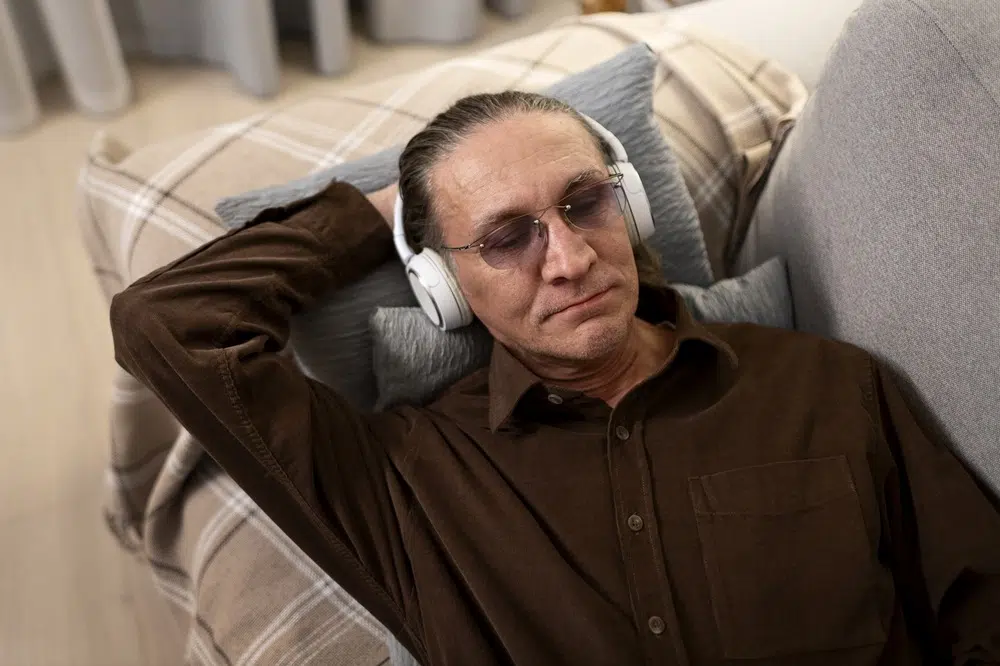As video content becomes more central to communication, marketing, and entertainment, it’s more important than ever to create content that everyone can enjoy and appreciate. For individuals who are blind or have visual impairments, audio description (AD) provides essential access to visual information that would otherwise be missed. When offered in multiple languages, it also bridges cultural and linguistic gaps, allowing global audiences to engage with content on equal terms.
In this article, we’ll explore what multilingual audio description is, why it’s needed, how it works, and the standards that support its use in accessible media.
What Is Audio Description?
Audio description is an additional narration that describes key visual elements of a video, including actions, settings, facial expressions, scene changes, and other important visual cues. This narration fits into the natural pauses in dialogue so that it does not interfere with the original audio. It is provided as a separate audio track.
For example, during a silent moment in a film, the audio description might say: “The woman picks up a framed photo and smiles as tears fill her eyes.”
This narration provides vital context that allows someone who cannot see the screen to follow the story fully.
To hear an example of AD, head to YouTube and listen to the Frozen trailer with audio description.
Why Do We Need Audio Description?
At least 43 million people around the world live with blindness, according to The International Agency for the Prevention of Blindness. An additional 260 million people have moderate-to-severe visual impairment. Without audio description, all these people are often left out of the full video experience. Here’s why AD is crucial:
- Equal Access: Audio description provides meaningful access to content that relies heavily on visual storytelling.
- Cultural Participation: Whether it’s a film, documentary, commercial, or educational video, AD ensures that people with visual impairments can enjoy and learn from visual media just like sighted audiences.
- Legal Compliance: Many countries now require audio description for broadcast and streaming content under accessibility regulations.
- Inclusive Branding: Companies and creators who offer AD demonstrate their commitment to diversity and inclusion, which strengthens brand reputation.
Why Multilingual Audio Description?
Standard audio description is typically provided in just one language. However, for international audiences, this limits accessibility. Multilingual audio description solves this by offering descriptive narration in different languages, enabling more people to engage with your content regardless of both their vision and language.
This is especially important for:
- Global brands and campaigns
- Multilingual countries or regions
- International festivals, streaming services, and educational platforms
- Public institutions serving diverse populations
By localizing audio description, you not only translate the words but adapt the tone, cultural context, and delivery style to match the language and audience.
How Does Audio Description Work?
Creating multilingual audio description is a detailed, thoughtful process:
- Scriptwriting – A professional writer creates a description script that captures essential visual details and fits naturally between spoken lines.
- Translation – The script is translated into the desired languages with a focus on cultural nuance and accessibility.
- Voiceover Recording – Skilled voice actors record the description in each language, aiming for natural pacing, tone, and clarity.
- Community Review – People who are blind or visually impaired review the audio description to ensure it is clear, accurate, and useful.
- Integration – The final narration is mixed with the original video to create a seamless viewing and listening experience.
Standards and Accessibility Guidelines
Audio description is part of several recognized international accessibility frameworks:
- WCAG (Web Content Accessibility Guidelines) from the W3C include audio description under their Level AA and AAA success criteria.
- The United States’ CVAA (21st Century Communications and Video Accessibility Act) mandates accessible video content, including audio description (AD) for certain programming.
- The Canadian Radio-television and Telecommunications Commission (CRTC) requires broadcasters to provide audio description and described video for specific programming.
- The EU Audiovisual Media Services Directive requires member states to make audiovisual media more accessible, including the use of AD.
- France’s ARCOM has guidelines supporting—and in some cases requiring—the use of audio description for public and private broadcasters.
These regulations ensure consistency and quality, helping content producers create AD that meets both legal and user expectations.
A Truly Inclusive Video Experience
Multilingual audio description ensures that people with visual impairments are not excluded from the global conversation. It allows them to experience film, advertising, educational videos, and more with full context, emotion, and impact—no matter what language they speak.
The result is an inclusive, seamless, multilingual audio experience that invites everyone to enjoy your content.
Need Help? ITC Global Can Support Your Accessibility Goals
ITC Global provides professional multilingual audio description services that combine expert scriptwriting, cultural adaptation, and high-quality voiceovers. Available in 11 languages—Danish, Dutch, English, French, German, Hungarian, Italian, Japanese, Spanish, Portuguese, and Swedish—our audio descriptions are reviewed and approved by people with visual impairments to ensure clarity and effectiveness.
Whether your content is for education, entertainment, marketing, or public service, we help make it truly inclusive.
Let ITC Global help you deliver accessible content that speaks to everyone. Contact us today to get started.


